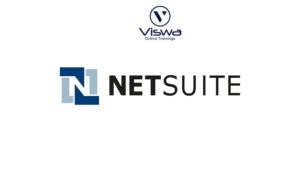AWS Admin Certification Training
One of the top providers of online IT training worldwide is VISWA Online Trainings. To assist beginners and working professionals in achieving their career objectives and taking advantage of our best services, We provide a wide range of courses and online training.
Learners : 1080
Duration : 30 Days
About Course
The comprehensive cloud computing platform offered by Amazon is called Our AWS Training. Numerous services are offered by AWS, including Infrastructure as a Service (IaaS), Application Platform as a Service (PaaS), and Software as a Service (SaaS), among others. Enrol today to earn your certification.
AWS Training Course Syllabus
✔ A Short history
✔ Client Server Computing Concepts
✔ Challenges with Distributed Computing
✔ Introduction to Cloud Computing
✔ Why Cloud Computing?
✔ Benefits of Cloud Computing
✔ Private Cloud
✔ Public Cloud
✔ Hybrid Cloud
✔ Software as a Service (SaaS)
✔ Platform as a Service(PaaS)
✔ Infrastructure as a Service (IaaS)
✔ Subscription to AWS
✔ AWS Free tier – Limits and usage
✔ Introduction to the AWS Management Console
✔ Regions and Availability Zones – How to choose the right one
✔ Amazon Machine Images (AMI)
✔ Working with AMIs
✔ Choosing the right AMI
✔ Deciding what goes into an AMI
✔ Finding the right AMI
✔ Pricing model in EC2 instances
✔ Deciding between On-demand instances, Spot instances, Reserved instances,
✔ Scheduled Instances, Dedicated Hosts
✔ EC2 Reserved Instance
✔ AWS Marketplace
✔ Building an EC2 Windows instance & Linux Instance
✔ Setting up security
✔ Security via Key Pairs
✔ Working with the Security Group
✔ Different IPs assigned to an EC2 instance
✔ Assigning Elastic IPs
✔ Logging into the instance
✔ Creating your own AMI/Registering your own AMI
✔ What is a placement group and what advantages of placement groups
✔ EC2 instance protection
✔ User Data Management
✔ AWS Simple System Manager (SSM)
✔ Creating and deleting volumes
✔ Attaching and detaching volumes
✔ Mounting and Unmounting the attached volume\
✔ Creating snapshots
✔ Increasing the volume size
✔ Creating a load balancer
✔ Internal Load balancer
✔ External Load balancer
✔ Load balancing protocols
✔ Security groups for the load balancer
✔ Configure health check for the load balancer
✔ Adding multiple instances to the load balancer
✔ Cross-zone load balancing
✔ Connection Draining
✔ What is auto-scaling?
✔ Autoscaling components
✔ Benefits of autoscaling
✔ Creation of launch configuration
✔ Configuration of autoscaling policies based on the Load on EC2 instances.
✔ Advantages of using Auto scaling with Elastic Load balancer (ELB).
✔ Creating and deleting buckets
✔ Adding objects to buckets
✔ Getting objects
✔ Deleting objects
✔ Creation of a static website using S3 storage
✔ Uses of S3 storage
✔ Working with Permissions of S3.
✔ Life cycle management in S3
✔ Accessing S3 storage via Tools
✔ Creating Vaults
✔ Accessing the Glacier vault using tools
✔ Using Glacier for backups
✔ Retrieval period
✔ Creation of user accounts in AWS
✔ Setting up multi factor Authentication (MFA)
✔ Roles in IAM
✔ Groups in IAM
✔ Delegation of permissions for users
✔ Creation of custom policies for delegation
✔ Account settings
✔ Credential Report
✔ Different types of networks that can be setup in AWS
✔ Creating a new VPC
✔ ACL & Security Groups
✔ Creation of Internet Gateway
✔ Connecting to instances in the gateway
✔ Debugging cloud-related issues
✔ Monitoring the AWS Service Health Dashboard
✔ Monitoring with Cloud watch
✔ Getting statistics for a specific EC2 instance
✔ Getting aggregated statistics
✔ Metrics for other AWS Services and related namespaces
✔ Setting up notifications
✔ Creation of a topic
✔ Subscribing to topic via Email
✔ Setting notification for EC2 instance changes
✔ Creation of a queue
✔ Sending messages to the queue
✔ Setting SNS to SQS
✔ Retrieving messages from SQS
✔ Route 53 Overview
✔ Setup internal DNS Namespace
✔ Creating different records in Route 53
✔ Setup Active directory
✔ Adding EC2 instances to domain
✔ Overview of different directory services
✔ Creation of Web apps using Elastic Beanstalk
✔ Environment overview
✔ Migrating content in different environments.
✔ Modifying the properties of the deployment.
✔ Selecting the Engine
✔ Configuring the Database Engine
✔ Creating your Database
✔ Setting up automatic backups
✔ Authorizing access to the DB via DB Security Groups
✔ Building AWS infrastructure as a code
✔ Utilization of Sample templates
✔ Introduction to JSON
| Live Instructor Based Training With Software |
| Lifetime access and 24×7 support |
| Certification Oriented content |
| Hands-On complete Real-time training |
| Get a certificate on course completion |
| Flexible Schedules |
| Live Recorded Videos Access |
| Study Material Provided |
AWS Training - Upcoming Batches
7th NOV 2022
10 PM IST
Coming Soon
AM IST
5th NOV 2022
2 PM IST
Coming Soon
AM IST
Don't find suitable time ?
CHOOSE YOUR OWN COMFORTABLE LEARNING EXPERIENCE
Live Virtual Training
-
Schedule your sessions at your comfortable timings.
-
Instructor-led training, Real-time projects
-
Certification Guidance.
Self-Paced Learning
-
Complete set of live-online training sessions recorded videos.
-
Learn technology at your own pace.
-
Get access for lifetime.
Corporate Training
-
Learn As A Full Day Schedule With Discussions, Exercises,
-
Practical Use Cases
-
Design Your Own Syllabus Based
AWS Training FAQ'S
The acronym for Amazon Web Services is AWS. It is a service offered by Amazon that makes use of a distributed IT infrastructure to deliver various IT resources as needed. It offers a variety of services, including software as a service, platform as a service, and infrastructure as a service.
Get ahead in your career by learning AWS through VISWA Online Trainings
The following are main components of AWS are:
- Simple Storage Service
- Elastic Compute Cloud
- Elastic Block Store
- CloudWatch
- Identity Access Management
- Simple Email Service
- Route53
The login information is encrypted and decrypted using public key cryptography on an Amazon EC2. In public key cryptography, the information is encrypted using the public key, and it is decrypted at the receiving end using a private key. Key pairs are made up of the public key and the private key. You can safely access the instances using key-pairs.
S3 is a storage service in AWS that allows you to store a vast amount of data.
AWS Lambda is a compute service that runs your code without managing servers. Lambda function runs your code whenever needed. You need to pay only when your code is running.
Reviews
 Vishnu Gadipudi2023-08-20I Enrolled in VISWA Online Trainings for IBM Integration BUS course . Recently I Completed IBM Integration BUS Batch. It was Really Awesome Experience. Best Place To Learn , Experienced Trainer, Gives Us High Level Knowledge....
Vishnu Gadipudi2023-08-20I Enrolled in VISWA Online Trainings for IBM Integration BUS course . Recently I Completed IBM Integration BUS Batch. It was Really Awesome Experience. Best Place To Learn , Experienced Trainer, Gives Us High Level Knowledge.... Navya Biradavolu2023-08-20I was enrolled for looker Bl Tool,it was amazing experience . especially soft skill batch is one of my favourite batch . overall learning process is quite impressive.
Navya Biradavolu2023-08-20I was enrolled for looker Bl Tool,it was amazing experience . especially soft skill batch is one of my favourite batch . overall learning process is quite impressive. Indla sneha2023-08-20I have joined I have joined VISWA Online TRAININGS for Java full stack course and i have completed Advance Java module. I had a good knowledge of Hibernate, spring,spring boot,spring MVC. Tutor has knowledge in depth and is supportive. Srinadh sir solved all our doubts....
Indla sneha2023-08-20I have joined I have joined VISWA Online TRAININGS for Java full stack course and i have completed Advance Java module. I had a good knowledge of Hibernate, spring,spring boot,spring MVC. Tutor has knowledge in depth and is supportive. Srinadh sir solved all our doubts.... bindu hima2023-08-20I am recently completed Talend course and trainer is Rajendra very professional and helpful. All the doubts were solved in a precise manner.
bindu hima2023-08-20I am recently completed Talend course and trainer is Rajendra very professional and helpful. All the doubts were solved in a precise manner. Tarunasree Gowra2023-08-20"I truly enjoyed this course." Chaitanya sir fantastic-very knowledgeable. Sir give us very informative and clear instruction on how to achieve the goal. Thank you!
Tarunasree Gowra2023-08-20"I truly enjoyed this course." Chaitanya sir fantastic-very knowledgeable. Sir give us very informative and clear instruction on how to achieve the goal. Thank you! Tejaswini Kommu2023-08-20Overall Linux Admin sessions batch was very good. Mr. RAM Krishna teaching was very helpful to remind our basic concepts in linux & networking.
Tejaswini Kommu2023-08-20Overall Linux Admin sessions batch was very good. Mr. RAM Krishna teaching was very helpful to remind our basic concepts in linux & networking. Gopanaboina Mounika2023-08-20It was great learning with such a great and experienced staff. Praveen Sir (Oracle EPM Cloud - FCCS) was very helpful and operations team also very helpful in solving any minor problems students go through process.
Gopanaboina Mounika2023-08-20It was great learning with such a great and experienced staff. Praveen Sir (Oracle EPM Cloud - FCCS) was very helpful and operations team also very helpful in solving any minor problems students go through process. Jyothi Gutlapalli2023-08-20I like to share my experience which provide lots of courses and one of those I recently completed my Salesforce BA Course and I like to tell you it was a great experience and my knowledge and confidence is really boosted after completing this course.
Jyothi Gutlapalli2023-08-20I like to share my experience which provide lots of courses and one of those I recently completed my Salesforce BA Course and I like to tell you it was a great experience and my knowledge and confidence is really boosted after completing this course. Harshibandi2023-08-20Good experience and great learning platform for Hyperion Essbase and Planning. The faculty is also well trained and soft spoken.
Harshibandi2023-08-20Good experience and great learning platform for Hyperion Essbase and Planning. The faculty is also well trained and soft spoken. Chaitu Viswa2023-08-20It was very good session for QlikView. I would like to thank to teacher Mr.Chandu for providing guidance for the required modules. Thanks VISWA Team for giving apportunity to leran new skills.
Chaitu Viswa2023-08-20It was very good session for QlikView. I would like to thank to teacher Mr.Chandu for providing guidance for the required modules. Thanks VISWA Team for giving apportunity to leran new skills.




